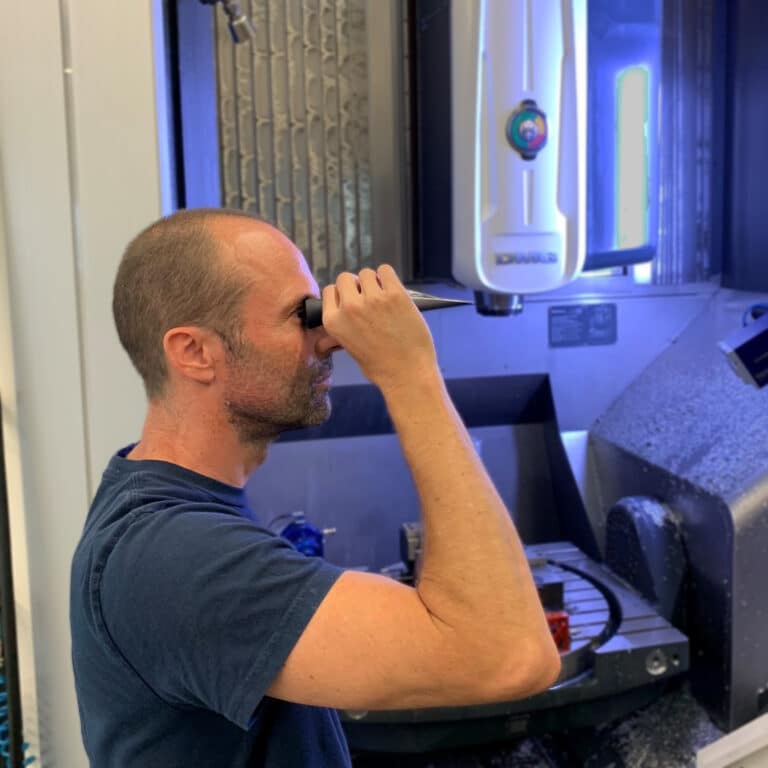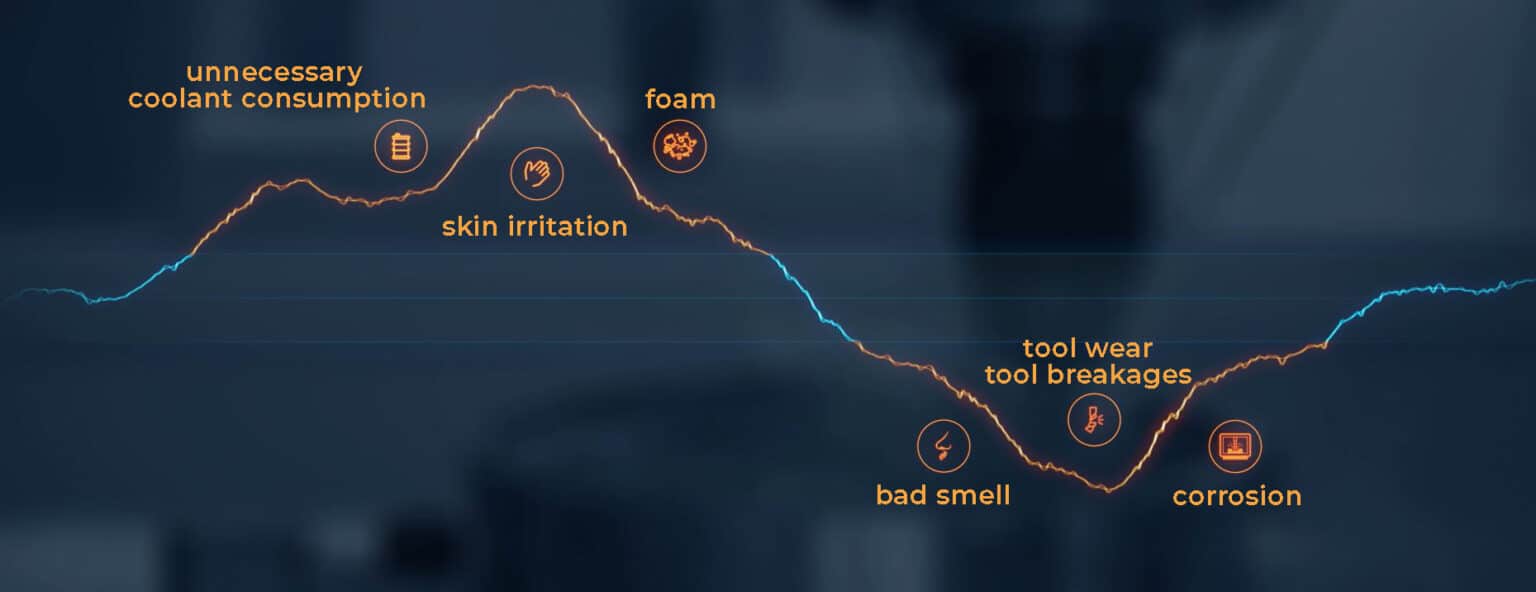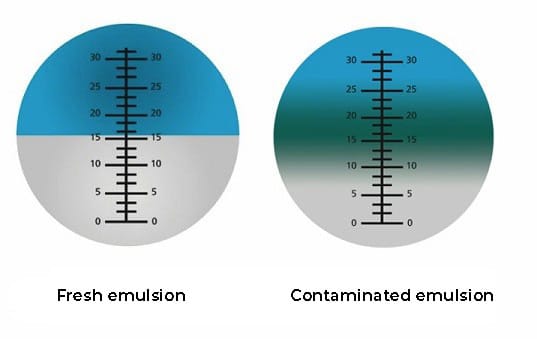Home • LIQUIDpedia • Checking and monitoring coolants
Checking and monitoring coolants
Cooling lubricants (coolants) are an important part in metalworking. Water-miscible coolant in particular must be subjected to regular testing to ensure stable processes and consistent results.

Types of coolants
Coolant – also called metalworking fluids, cutting fluid or cooling lubricants – can be divided into water-miscible and non-water-miscible coolants. Non-water-miscible coolants are metalworking oils that are used either as cutting oils or grinding oils.
Water-miscible cutting fluids are either emulsions or solutions. Emulsions have a natural oil content while solutions are glycol-based and thus synthetically produced.

Functions of a metalworking fluids
A metalworking fluid has three main tasks
- Lubrication reduces friction between the tool and the workpiece
- Cooling removes heat
- Flushing removes chips from the work table or from holes
To ensure that the coolants can perform their tasks optimally, it is important to check the coolant regularly. In particular, the coolant concentration is measured. But pH, hardness, nitrite and conductivity are also important measured values.
Additional functions of coolant
In addition to the three main tasks, coolants perform a whole range of additional tasks:
- Corrosion protection
- Less foaming
- Machine and human compatibility
- Long-term stability
- Protection and compatibility in the area of environment, health and safety
How often should you check coolants?
Water-miscible coolants consist of one part water and one part concentrate. Depending on the machining operation, the optimum coolant concentration is usually between 3% and 10%. There is an optimum concentration for every machining operation, every material and every metalworking fluid.
The more frequently you measure and correct the coolant concentration, the more constant the concentration will remain and you will benefit from stable processes and optimum performance of the cutting fluid. With many of our customers we see that the metalworking fluid’s concentration is measured weekly or less frequently. We recommend a manual measurement before each shift. For machining operations with high discharge, even more frequently.

Frequent manual measurement is costly and time-consuming. With an automatic coolant management system – such as the Liquidtool Instructor – a water-miscible coolant can be subjected to a automated regular check while you can concentrate on the essential tasks. This automatic coolant control can even be done every hour without you noticing.
Why do you need to monitor coolants?
There are several reasons why you should monitor metalworking fluids. Due to discharge and evaporation, the water content in the emulsion is constantly decreasing. Consequently, the metalworking fluid’s concentration is constantly increasing. By checking regularly, the coolant sump can be topped up at the right time and the concentration will be optimal again.
An unstable metal cutting fluid has also a lot of dangers and hazards that loom when you have an over-concentration oder under-concentration: over-consumption, skin irritation, foam, smell, tool wear, machine wear, corrosion.

In Germany, the Technical Regulation for Hazardous Substances TRGS 611 obliges all users to test and check coolant regularly and to document the data. The coolant concentration, temperature, pH value and nitrite must be measured and documented at least once a week.
Such documentation can be done with a data sheet on the machine or with a digital dashboard. A digital storage of all measured values offers the advantage that the user always has an overview of all data. In addition, the measured data is traceable and reliable – especially in the case of automatic measurement. An automatic coolant management system notices deviations and exceeded limit values immediately and can trigger a notification. With manual measurement, there is a risk of measurement inaccuracies when reading the refractometer.

With an automatic and regular measurement of the cooling lubricant, measurement errors, inaccuracies in the interpretation and the neglect of the measurement can be eliminated. On the other hand, the data can finally be viewed clearly and transparently.
